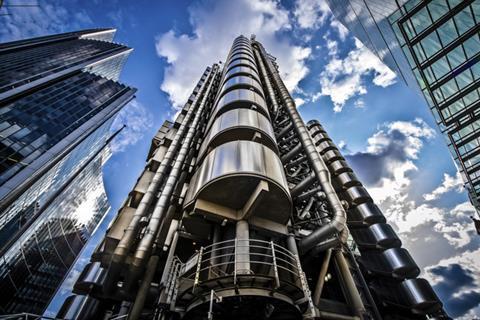Insurance Times takes a deeper look into what ‘#MeToo’ means for the insurance industry following several accusations made by women on the London market and Lloyd’s survey
Harassment scandals at Lloyd’s have brought the ’#MeToo’ movement into the insurance arena and forced companies to examine their own approaches to tackling the problem, but how easy is it to define?
According to the Equality Act is defined as “any unwanted conduct related to a protected characteristic (such as age, race, gender, disability, religious belief or sexual orientation) which has the purpose or effect of violating someone’s dignity or creating a hostile, intimidating, degrading, humiliating or offensive environment”.
But Christopher Stanton, partner at Keoghs suspects that many do not know what it is.“It does not have to be physical; it could be over email or text, it could be verbal ie: laddish behaviour”, he told Insurance Times.
“Critically [if] the purpose of it is to violate your dignity or to create a hostile environment then that is harassment. If you step back and think ‘would I be happy if this was to happen to my loved one’, If the answer [to that] is no, that may be getting close to what might constitute harassment,” he said.
Company culture
Although Lloyd’s survey that followed the reports of 18 women on the Lloyd’s market claiming sexual harassment was a positive one, Keoghs says that the insurance industry still has a long way to go.
The survey found that nearly 500 people working in the insurance market have suffered or observed sexual harassment over the past year. Lloyd’s subsequently banned lunchtime drinking back in April following the allegations.
Keoghs pointed out that the issue is not just confined to Lloyd’s, it is a much bigger societal problem, but it believes that the solution lies within company culture.
The law firm discussed its strategy to create an open and safe place to report incidents and therefore ensure that this does not happen.
Joanne Wright, head of people at Keoghs, told Insurance Times that it has created an environment in which people feel safe and free from any form of discrimination by ”empowering our people to define our culture”.
“A group of more than 100 staff with varied backgrounds and viewpoints from across the business developed the values that guide our day-to-day behaviours. As a result of this inclusive approach we have a culture that is truly representative and ensures people are treated with respect and dignity at all times,” she explained.
In addition to this, Keoghs also has “robust policies on workplace behaviour that include equality and diversity and dignity at work,” that sit alongside formal processes – this is to ensure any complaints are thoroughly investigated and appropriate actions taken.
Shifting attitudes

Although Lloyd’s has traditionally been a very alpha-male hard-drinking environment, Stanton believes this is shifting.
He hopes that the industry will take note of Lloyd’s survey and act on the findings.
When asked why there has been an increase in the reporting of these incidents, Stanton thinks that this spike in reporting of incidents stems from the ‘me too’ movement which he suspects has caused a “snowball effect” across industries.
On top of this there has also been a change in what is deemed acceptable, he said that behaviour that was witnessed 20 years ago simply will not be tolerated now.
But Stanton believes that the solution to stamping out these incidents is providing clear guidelines as to what is and is not acceptable and therefore instilling a positive culture in the workplace.
Culture, is one of the three initiatives that Lloyd’s hopes to implement over the coming months.
Culture, culture, culture
Explaining that this was a major issue in the industry that had been going on for a long time, Stanton continued: “It’s all about culture. It’s about firms having clear policies that harassment is not allowed under any circumstances. Those values have to be lived and breathed by all people.
“It’s that culture that still needs addressing. It’s about training, properly investigating and potentially having sanctions [in place] where its proven.
“Frankly any business should have their own code of conduct that all staff sign up to where its set out what is appropriate and what is not, so that people are not in doubt. A lot of the problems at Lloyd’s have historically been drink related but they have over the last few years seriously addressed this problem.”
Overnight change?
But he said its not just about having a policy, it is about embedding values and training people on that policy.
He added that all companies should have a policy in place to allow people to understand what is expected of them, “It’s about having proper values across the whole organisation that are embedded and become second nature”.
In conclusion, Stanton warns that this won’t change overnight but in time it will change people’s mindset.
What is the industry doing?
Many echoed Stanton’s points, Aon stated they have a “culture of inclusion” and clear expectations around behaviour for its employees, while others such as Allianz said that it operated a zero-tolerance policy to both bullying and harassment as well as having a code of conduct.
Zurich also said that it trains every single people manager in best practice, in handling concerns such as these and schools them on how to spot signs that there may be an issue in order to tackle inappropriate behaviour at the source. It bolsters this approach by also educating employees on how they should expect to be treated at work.
Others such as LV= and LMS highlighted ways that employees can report unwanted behaviour.
Overall the firms that Insurance Times approached for comment were actively making sure these expectations were clear, that an inclusive culture was sought and that reporting mechanisms were readily available to all.
Hosted by comedian and actor Tom Allen, 34 Gold, 23 Silver and 22 Bronze awards were handed out across an amazing 34 categories recognising brilliance and innovation right across the breadth of UK general insurance.






















































No comments yet